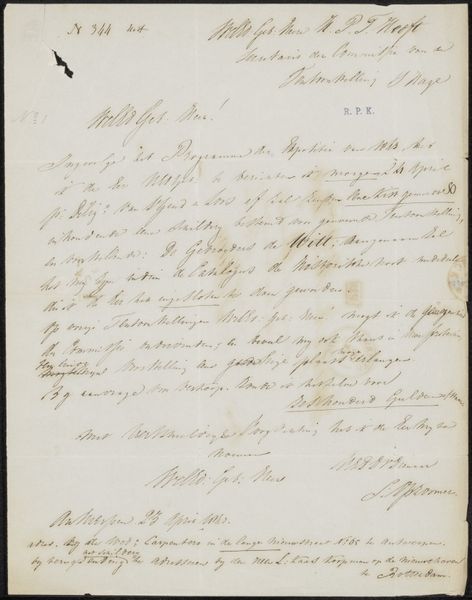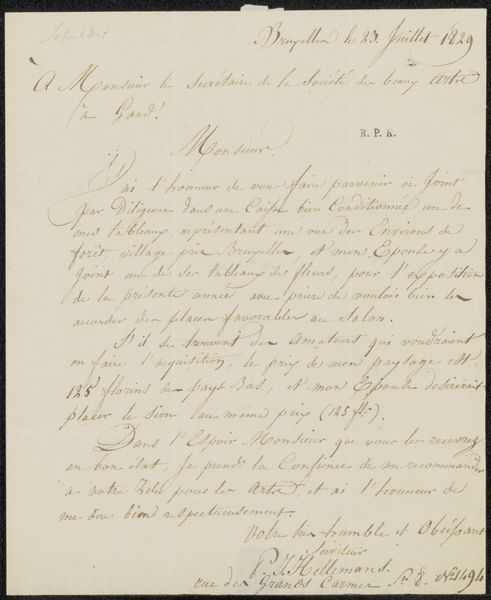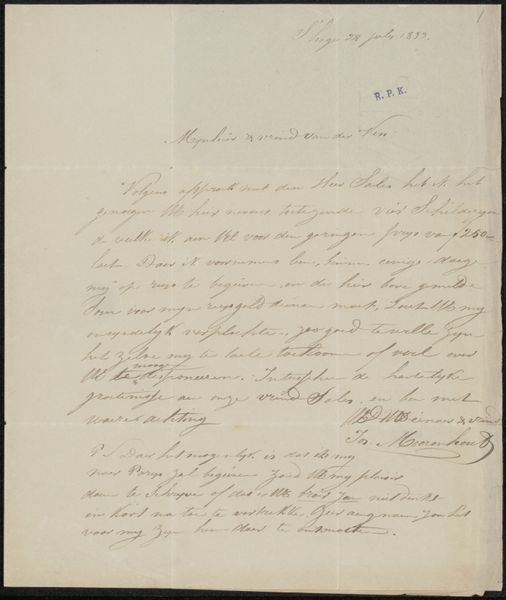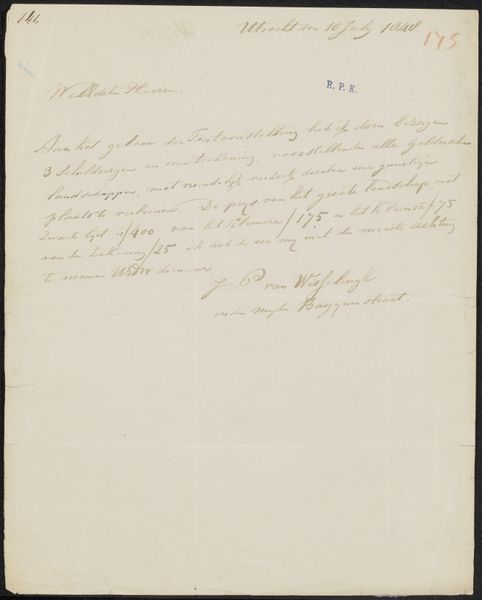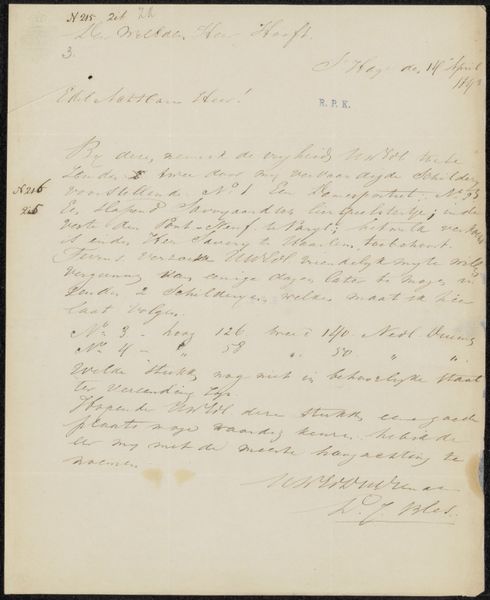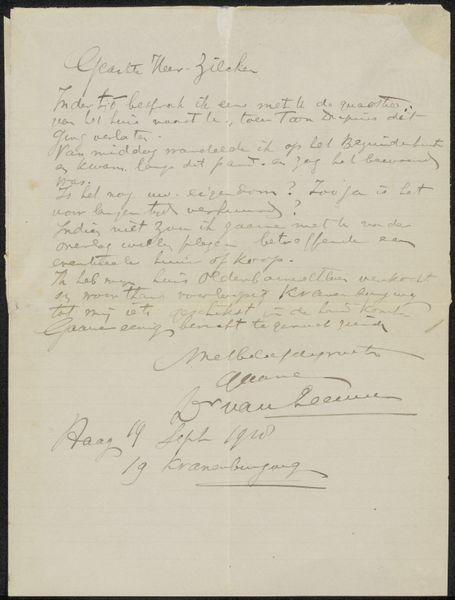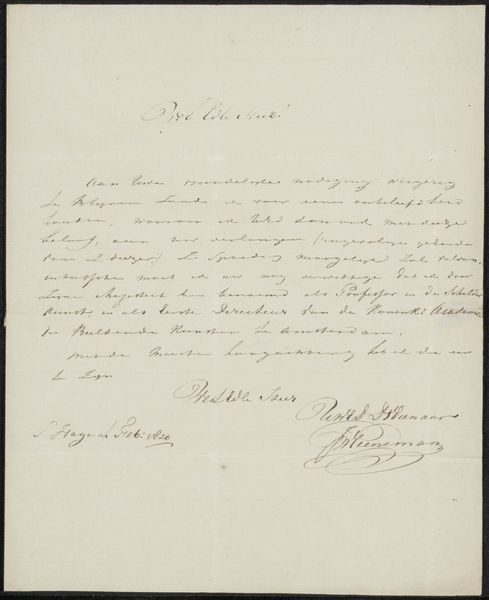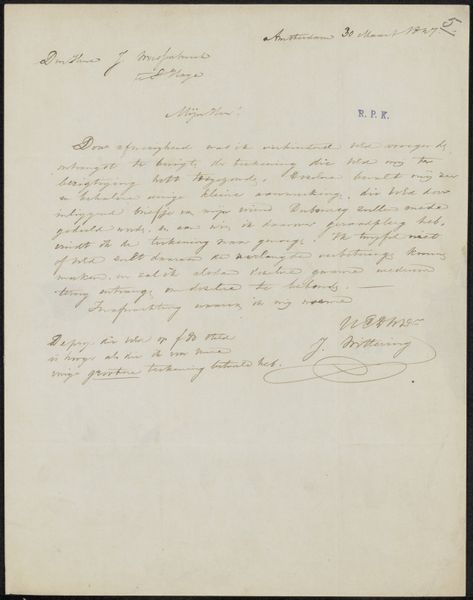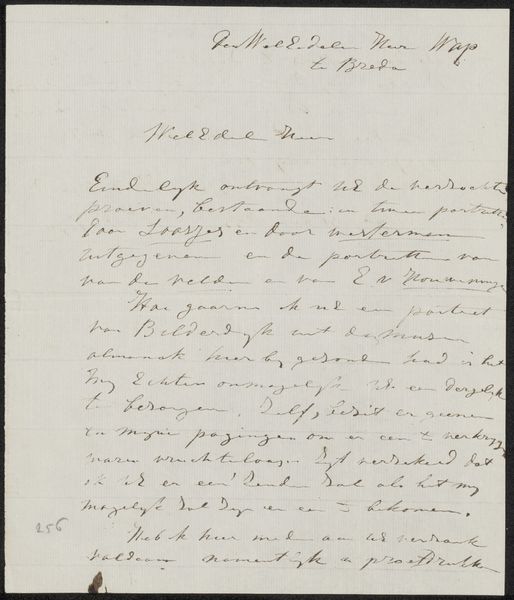
Brief aan de commissie van de Tentoonstelling van Levende Meesters in Utrecht Possibly 1848
0:00
0:00
drawing, paper, ink
#
drawing
#
ink paper printed
#
paper
#
ink
Copyright: Rijks Museum: Open Domain
Curator: Here, we have Douwe Hansma's "Brief aan de commissie van de Tentoonstelling van Levende Meesters in Utrecht," dating possibly from 1848. It's an ink drawing on paper. Editor: Immediately, I’m drawn to the handwriting itself. There’s a certain… vulnerability, I think, in seeing these words etched onto the page. It feels very personal. Curator: Absolutely. Think about the social and political context of the mid-19th century. Artistic institutions wielded significant power, and submitting work to a jury was fraught with anxieties, especially given Hansma's reliance on this written plea. The intersection of artistic merit and bureaucratic decision-making... Editor: So true! You see the way he signs off - the flourish of his signature? It’s a tiny act of defiance, almost a wink, as if saying, "I know my worth, regardless!" But the neatness suggests pleading. Do you get that impression? Curator: Definitely, a poignant reflection of the artist's position. There is a dance, always, in such missives between self-assurance and the necessity of institutional approval for survival. Note, too, how paper and ink can represent an artistic intervention itself, capable of subverting accepted notions. Editor: The yellowing paper gives it a melancholy feeling; maybe my mind fills in narratives of struggle or unfulfilled dreams for Hansma. I wish there was also something brighter to be found; I would enjoy the text far more, I imagine, had there been any colorful element in it to attract the reader. It seems I can barely make out certain words written there. Curator: Well, considering how difficult to decode Hansma's script is after so many years and countless historical upheavals, I'd say the "brief" already succeeded in one purpose: a material existence defying any form of temporality. Editor: Indeed, I never thought about that way. Makes it worth my attention. Curator: I agree. It provides a glimpse into an artist’s life, capturing an instant when hope and self-doubt coexisted on a single sheet of paper, preserved as an emotive document and historical piece. Editor: Precisely. These small ephemera can resonate more deeply because of that palpable human desire embedded within. It gives new shape to the relationship between artist and the system itself.
Comments
No comments
Be the first to comment and join the conversation on the ultimate creative platform.
